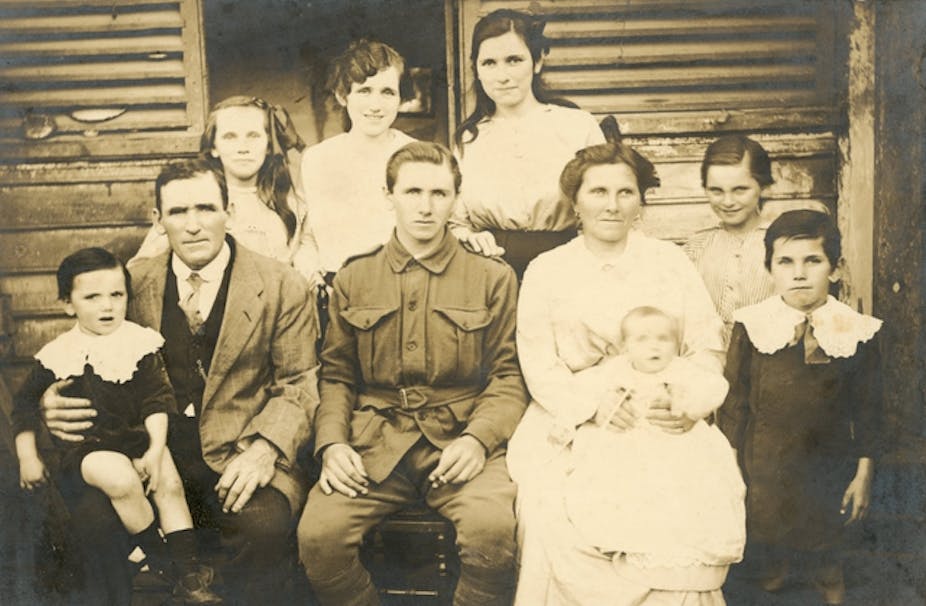Over the next four years, the centenary of World War One will prompt the publication of a vast number of war-related books. In Australia, it will be hard to keep count of the new books on Gallipoli, with many more in production on every aspect of the war – from the invasion of German New Guinea in 1914 to the last battles of the exhausted armies in France in 1918, from the conscription debates to the changing role of women.
If a book is not going to disappear without trace it will either need to say something new (and preferably controversial) or say it better (or more controversially) than any other.
Historian Joan Beaumont has neatly avoided the problem by bringing out Broken Nation: Australians in the Great War a year before the avalanche begins. In doing so, she has done readers a great favour because it is hard to imagine a better starting point for those who want to gain a comprehensive overview of the whole war before beginning the five-year marathon of centenary accounts of particular battles and campaigns.

Broken Nation is a massively ambitious project. It places Australia’s war within the broader context of the wider war. We learn, for example, of the calamitous Austro-Hungarian offensive in Galicia in 1914 in which the attacking forces lost more than Australia’s entire wartime casualties in a few weeks.
It also explains the background of the battles where the Anzac legend was made – Gallipoli, Pozieres, Bullecourt, Passchendaele and Villers-Bretonneux. The story of each battle is told clearly and succinctly. A deep knowledge of the primary sources allows Beaumont to select vivid quotes making real the blood, guts and tragedy of the fighting while still maintaining the narrative flow.
The military aspects of the war – the campaigns and the battles – form the greater part of the book. But Beaumont also tells the story of the war within Australia, from the early near-unanimous enthusiasm to fight for King and Empire, through the unravelling of the consensus during the conscription debates and strikes of 1916 and 1917 to the grief-laden war weariness of 1918. She segues skillfully between the war in Europe and the Middle East and events in Australia to give a real sense of the war as a whole.
In recent decades there has been increasing scholarly interest in the ways in which war has been remembered and commemorated in Australia. Beaumont has drawn on this to weave into her story accounts of the early Anzac Days and the growth of its “semi-sacred” rituals, and the memorials in France at Fromelles, Pozieres and other battlegrounds that have come to symbolise the sacrifice of young lives in the war.
An aspect of this which was new to me was the story of the memorials erected by the five divisions of the Australian Imperial Force (AIF) on battlegrounds that had special meaning for each.

The most prominent individual in the book is not – as might have been expected – Sir John Monash, but Billy Hughes, the diminutive and irascible Welshman, who dominated the Labor government elected in September 1914 before becoming prime minister in October 1915. Hughes’ forceful presentation of Australia’s views to the British government in London in 1915-16 and 1918 and to the world at the peace conference in Versailles in 1919 aroused anger and admiration, while causing palpitations among his cabinet colleagues at home.
There are few elements of Beaumont’s work to criticise. It would be possible to argue that the title overstates the extent to which Australia in the 1920s was a “broken nation”, but this is a matter of opinion.
An irritating feature for this reader was the large number of quotes from secondary sources often saying relatively unimportant things. Why for instance, do we need to be told in the text that British war historian Niall Ferguson said that rest, food, alcohol and tobacco “kept men going” at the front? The author is right to acknowledge her sources, but it would have been less intrusive to do so in the endnotes.
For a book of great scholarship that took many years to research and write, there are a surprising number of simple mistakes of fact – for example, Adolf Hitler was not in Berlin but in Munich when the war began, and that famed war correspondent C.E.W. Bean was born in Bathurst, not in England.
More seriously, while the overall balance of the book is hard to question, some topics – notably the Treaty of Versailles – are treated in great detail. Others, arguably as important, are passed over in a few words.
Almost completely absent is analysis of the economic impact of the war. Although the war gave a great boost to Australian heavy industry and other industries such as pharmaceuticals and electrical goods, the economy as a whole shrank substantially between 1914 and 1919, and proved highly vulnerable to the economic storms of the 1920s and 1930s.
In World War Two, however, the economy as a whole grew strongly and in 1945 Australia was positioned to enjoy almost three decades of great prosperity.
Why was this so? It has rarely been discussed by historians, let alone answered. Economic performance is a fundamental but often ignored factor in history. The main reason why Germany lost the war is because it did not appreciate the enormous latent strength of the British economy and Britain’s consequent ability both to fund the war and produce the munitions to fight it.
Nonetheless, these are relatively small quibbles. Joan Beaumont has produced a marvellous book. It is succinct yet comprehensive, at once moving and deeply analytical. If any single volume history of Australia’s experience of World War One (and there will be many published in the next five years) surpasses it, it will need to be a brilliant book indeed.

